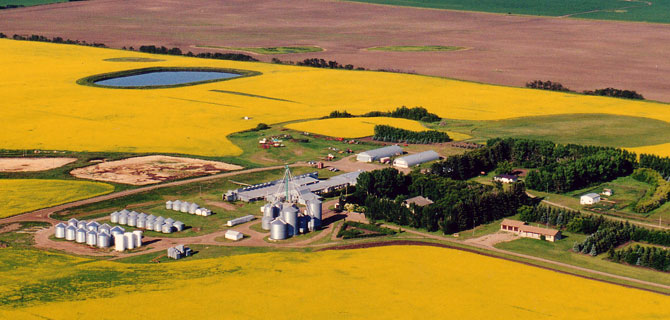Tuesday, 23/12/2025 | 13:05 GMT+7
Grain farm operating expenses have increased steadily over the past decade, with the high costs of inputs, especially electricity, becoming one of the most serious challenges facing farmers. But the sector has great potential for efficiency improvements, says Andrew Etzinger, senior general manager at Eskom’s Integrated Demand Management department.
After diesel, electricity is the most highly-used source of energy in the agriculture sector. Exploring alternative energy sources and reducing electricity costs are becoming increasingly crucial for South Africa’s grain farmers as a result of rising electricity tariffs and intensifying pressure from global customers to adopt greener practices.
Millions of rands are lost in the sector every year as a result of energy-intensive or insufficiently maintained equipment and systems. Optimising energy efficiency is, therefore, one of the most important steps grain farmers can take to reduce operating costs and remain competitive. Fortunately, the sector has great potential for efficiency improvement, cost-saving and the application of alternative energy solutions.
Direct energy costs on farms include electricity and fuel to drive equipment and machinery used in crop production and grain drying. Indirect energy costs include transportation and the spreading and application of mineral fertilisers. Modern application techniques can help to reduce the amount of energy used by adapting the quantity of fertiliser and the number of applications to each crop’s needs.

Improved drying
Another significant energy efficiency optimisation measure, particularly in wheat production, is to improve the drying process. Various factors can influence energy consumption here, for example the type of drying process, whether continuous or batch-type; the initial moisture content of the product; and weather conditions.
One of the best ways to reduce energy use in this process is to install dryers designed for energy efficiency. Moreover, fans and grain depth should be matched for optimum performance, while a higher drying temperature within the recommended range for the dryer could increase fuel efficiency. Dryers’ moisture meters and temperature sensors should also be calibrated regularly to increase reliability and avoid over-drying.
Further efficiency improvements can be achieved by optimising process controls, maximising heat recovery with heat pumps and reducing heat losses with thermal insulation. Irrigation pumps, motors, driving fans and conveyors are among the most energy-intensive technologies used in grain farming and represent many opportunities for energy efficiency interventions.
Energy audit
Retrofitting energy efficient technologies and systems is by far the most effective way to reduce and control energy consumption by mechanical means on grain farms. However, farmers should invest in an energy audit beforehand. This vastly under-used tool can help farming operations to save energy and money.
An audit typically analyses bills, usage data, equipment and processes such as power units, drives, compressors, insulation, heat exchange, lighting and ventilation to accurately identify solutions aligned to the specific requirements of the farm. Recommendations for retrofits and upgrades of machinery and equipment include:
Lighting: Replace inefficient lighting systems with efficient alternatives such as compact fluorescent lamps (CFLs), light-emitting diodes (LEDs), T-5 systems, electronic control gear and daylight harvesting.
Motors: Replace inefficient or over-size motors with energy efficient alternatives, or install vertical speed drives (VSDs).
Pumps: Retrofitting energy- efficient pumps, which should be used with energy-efficient and correctly sized motors and combined with vertical speed drives (where feasible).
Renewable energy
Utilise alternative energy sources such as solar water-heating, mini-hydro schemes or solar photovoltaic (PV) panels. The switch to energy- efficient technologies depends on farmers’ budgets, the cost and availability of these technologies, the scale of an envisaged retrofit and its feasibility within the framework of a particular farming operation. However, there are ways to create savings with a relatively low capital investment.
The use of renewable energy sources is going to become more widespread and viable in the farming sector. For grain farmers, in particular, biomass – organic matter used as fuel – will become more important as a source of energy for heat and power generation. This energy source is renewable and can reduce the emissions of nitrogen oxide and sulphur oxide in power generation. If waste is used, the cost of fuel can be close to zero.
Truong Duy








 Webinar 2: “Financial Support for Energy Efficiency Enterprises – Opportunities and Challenges”
Webinar 2: “Financial Support for Energy Efficiency Enterprises – Opportunities and Challenges”
 Vietnamese enterprises achieve green growth and cut costs through energy efficiency
Vietnamese enterprises achieve green growth and cut costs through energy efficiency
 Capacity Building for Program Implementing Entity
Capacity Building for Program Implementing Entity
 Enhance Energy Efficiency Knowledge for Managers of Cement Industrial Enterprises
Enhance Energy Efficiency Knowledge for Managers of Cement Industrial Enterprises
 Promoting Energy Efficiency for Technical Staff of Brick and Ceramic Sector
Promoting Energy Efficiency for Technical Staff of Brick and Ceramic Sector
 Capacity building for participating financial institutions of the VSUEE Project
Capacity building for participating financial institutions of the VSUEE Project
 Capacity building for participating financial institutions in Ho Chi Minh City
Capacity building for participating financial institutions in Ho Chi Minh City